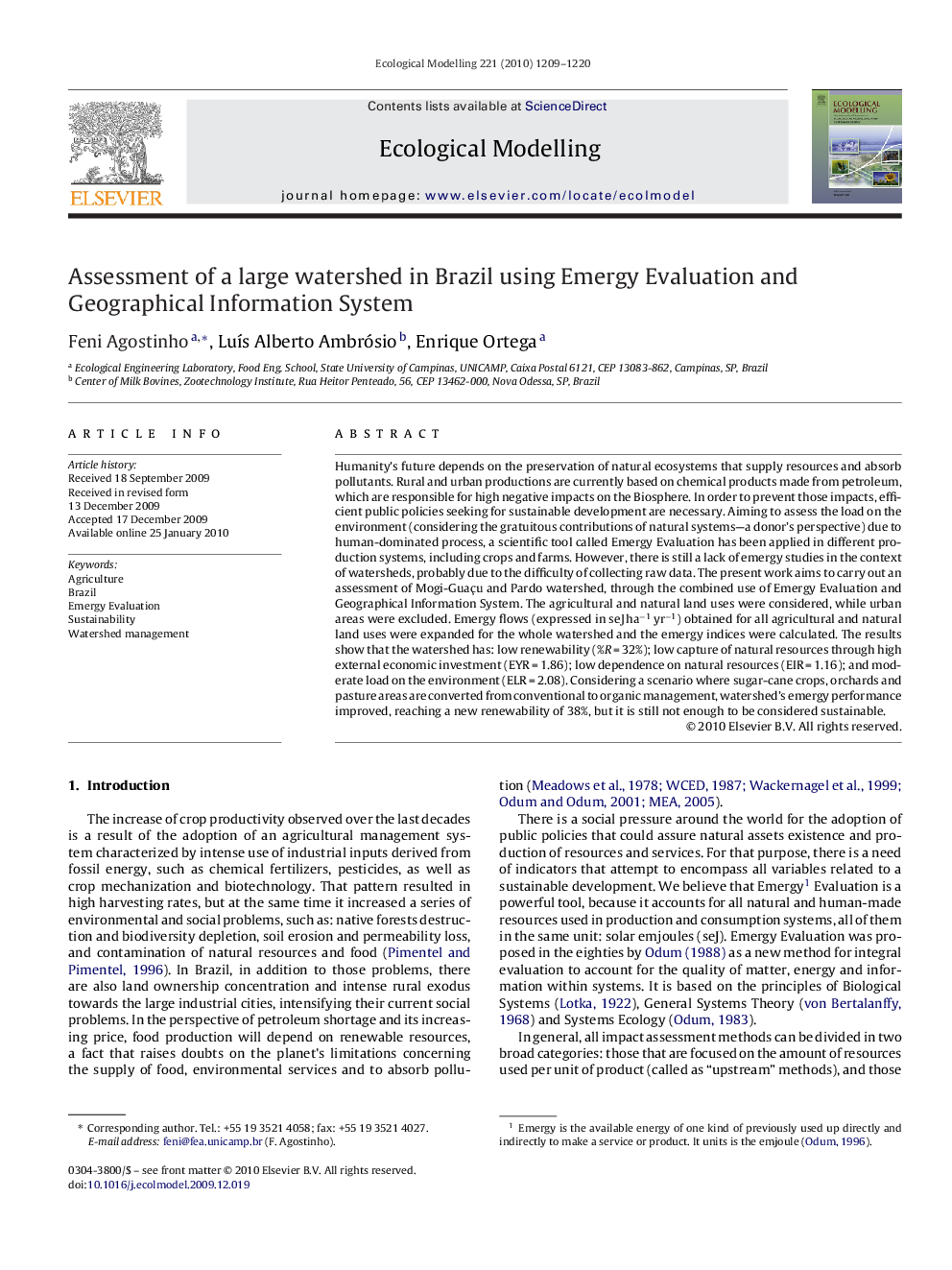| Article ID | Journal | Published Year | Pages | File Type |
|---|---|---|---|---|
| 4377406 | Ecological Modelling | 2010 | 12 Pages |
Abstract
Humanity's future depends on the preservation of natural ecosystems that supply resources and absorb pollutants. Rural and urban productions are currently based on chemical products made from petroleum, which are responsible for high negative impacts on the Biosphere. In order to prevent those impacts, efficient public policies seeking for sustainable development are necessary. Aiming to assess the load on the environment (considering the gratuitous contributions of natural systems-a donor's perspective) due to human-dominated process, a scientific tool called Emergy Evaluation has been applied in different production systems, including crops and farms. However, there is still a lack of emergy studies in the context of watersheds, probably due to the difficulty of collecting raw data. The present work aims to carry out an assessment of Mogi-Guaçu and Pardo watershed, through the combined use of Emergy Evaluation and Geographical Information System. The agricultural and natural land uses were considered, while urban areas were excluded. Emergy flows (expressed in seJÂ haâ1Â yrâ1) obtained for all agricultural and natural land uses were expanded for the whole watershed and the emergy indices were calculated. The results show that the watershed has: low renewability (%RÂ =Â 32%); low capture of natural resources through high external economic investment (EYRÂ =Â 1.86); low dependence on natural resources (EIRÂ =Â 1.16); and moderate load on the environment (ELRÂ =Â 2.08). Considering a scenario where sugar-cane crops, orchards and pasture areas are converted from conventional to organic management, watershed's emergy performance improved, reaching a new renewability of 38%, but it is still not enough to be considered sustainable.
Related Topics
Life Sciences
Agricultural and Biological Sciences
Ecology, Evolution, Behavior and Systematics
Authors
Feni Agostinho, LuÃs Alberto Ambrósio, Enrique Ortega,
